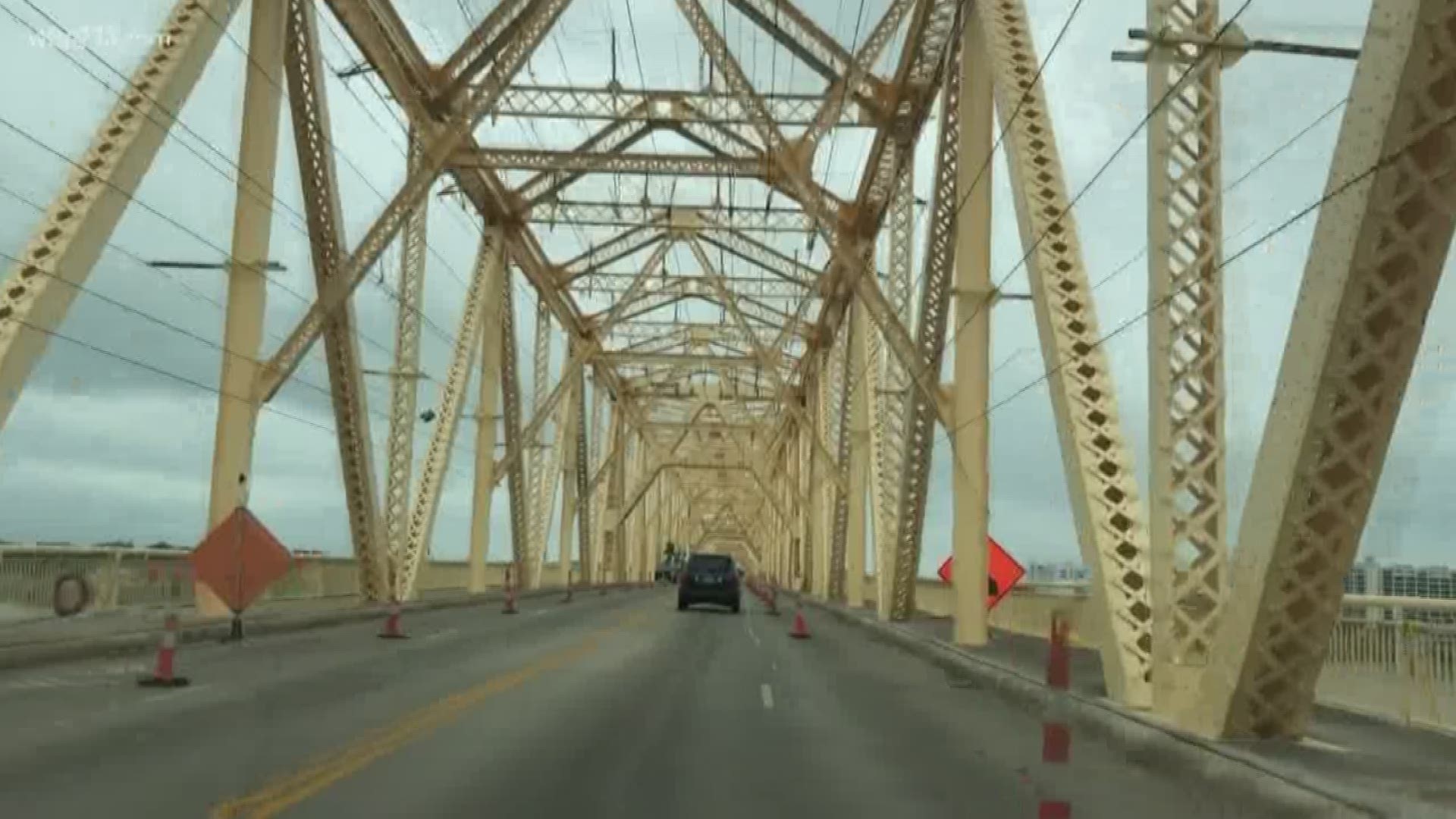LOUISVILLE, Ky. — We’ve gotten this question in many variations, over and over again, but the gist is this: “Why are they painting the 2nd Street Bridge yellow?” (To be sure, some of the posts had a few more four-letter words than others, but you know, #YOLO).
There are rumors floating around online that it has to do with bourbon, but I know what you’re thinking: this yellow is NOT the color of bourbon. Like, not even remotely. No amount of squinting will change that fact.
Exhibit A:


I rest my case.
To set the record straight, I chatted with Rebecca Matheny. She’s the executive director of the Louisville Downtown Partnership.
“I am a native Louisvillian, and my family has been in Kentucky a very long time,” Matheny laughed. “I am well aware that bourbon is not yellow with red and yellow lights.”
Matheny explained that the key inspiration for the yellow color was the desire to transform the space underneath the bridge next to the Yum! Center. They felt the silver (and rust, tbh) did not make the area the “really warm, welcoming place to be” that they had envisioned. Thus, a warmer color palette was always top of the list for the transformation.
With that said, the bourbon rumors aren’t super far off. Matheny said that the designers wanted to pay homage to the history of the area as ‘whiskey row.’
“[That’s] why the combination of yellow paint, red lights, and yellow were meant to be ‘evocative’ of bourbon,” she said. “Because that’s how design people talk: ‘evocative of.’”
So, why be “evocative of” rather than just paint the bridge "bourbon brown"? Well, first of all, picture a brown bridge and retract your question.
But, second of all, it actually was never an option. See, federal funds are being used in this Clark Memorial spit shine, and when federal funds are in play Uncle Sam gets a say. All colors have to be approved by the Federal Highway Administration so that it works with the upkeep and inspection of the bridge. In general, that means only light colors can be proposed, because it makes it easier to detect rust.
“[T]he color does have to be able to show rust so they can see if there’s structural damage that they need to be paying attention to or places they need to fix,” Matheny said.
---
Want to know "WHAS up" with something? Rob Harris is your guy. He's talking to some of the smartest people in our community to find out more about science, history, urban legends, local quirks, and more.
Have a question or topic you want him to check out? Send him a tweet or a Facebook post. Stay up-to-date with WHAS Up on the WHAS11 app. (For Apple or Android users).

